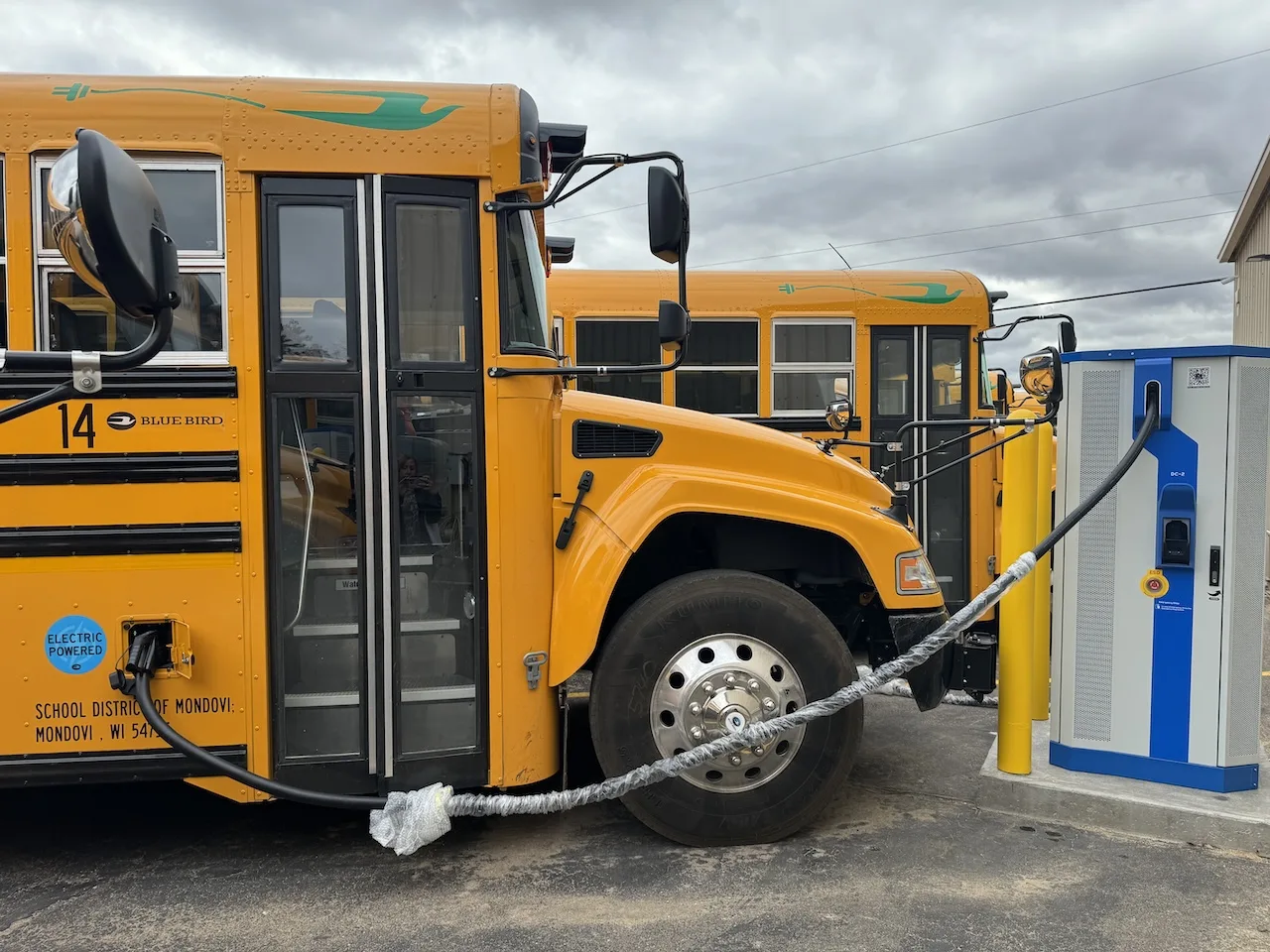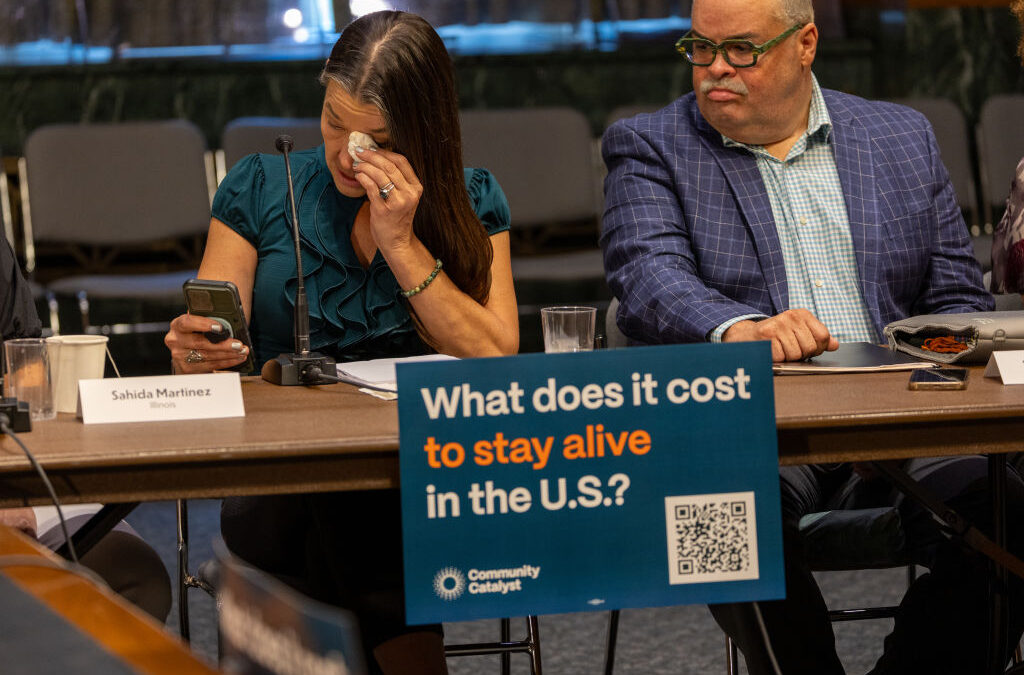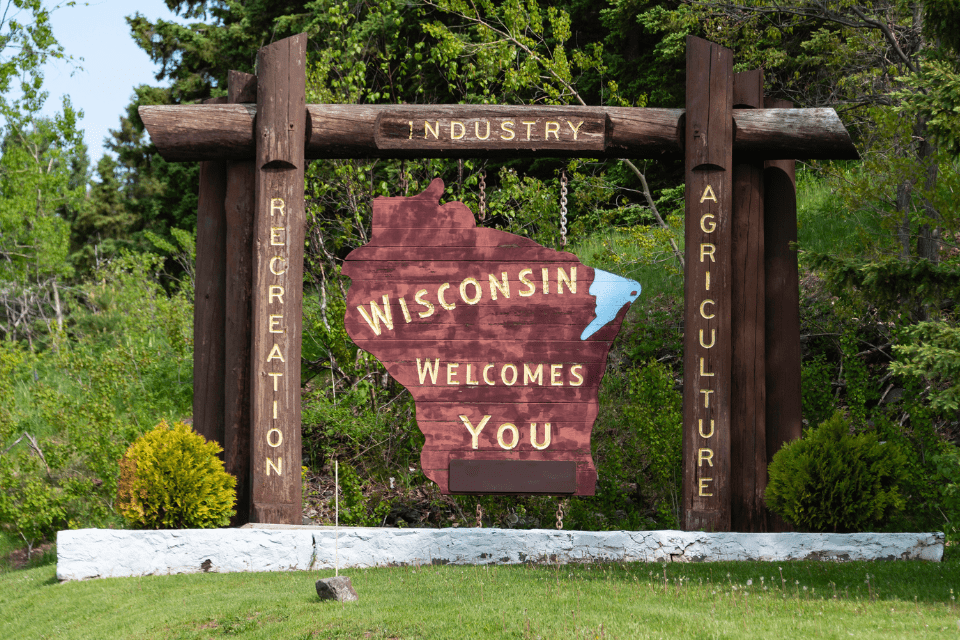
The Mondovi School District received five electric school buses and charging stations through a federal grant.
Electric school buses are gradually being rolled out across the state. They’re still big and yellow, but they’re not loud and don’t smell like diesel fuel. President’s Biden’s Bipartisan Infrastructure Law, through its Clean Bus Program, is providing $5 billion over five years to replace existing school buses across the country with zero or low-emission models. Rural Wisconsin school districts are taking advantage.
“Owen, are you going to go turkey hunting with your dad?” asked school bus driver Dan Danzinger, on his after-school route in Mondovi.
From his front-of-the-bus seat, Owen, a first grader, points to the hillside out the window. “That’s where the turkeys usually are!”
Owen went on to talk about the more-preferred deer hunting—and how his dad teaches him all he needs to know.
“I love to hear the kids’ stories,” Dan said.
After retiring from 26 years at Cardinal Glass in Menomonie, Dan Danzinger thought he’d drive school buses for a couple of years in his hometown—“But I’m on year six already!”
“It’s watching the kids grow up,” Dan said, of his surprise longevity. “They change quite a bit over the years.”
“But the most important responsibility is keeping them safe on the bus.”
It’s a quieter ride
As the bus rolls up and down the Buffalo County bluffs, Dan can be heard giving a farewell to students by name as he stops the bus in front of each house and opens its doors.
“Bye, Brynn! Have a good night!”
“Here comes your mom, Roswell!”
“See you tomorrow, Milly!
These days, the goodbyes and cute conversations don’t have to be shouted as they used to be, when they were competing with the rumbling of a diesel engine.
That’s because, for the past two weeks, Dan’s been driving a new bus. An electric one.
“They say the electric buses are quieter—and they are,” Dan said. “It’s hard to know if it’s running or not when you turn the key.”
“The kids seem to enjoy it more because they can hear the radio better now!”
While Dan smiled, and noted that the volume level coming from the 50 kids, on the other hand, might have remained the same, third-grader Kinley noticed an improvement on that front.
“There was more screaming on the other bus,” Kinley said matter-of-factly. “They don’t have to yell so loud over this new bus.”

School bus driver Dan Danzinger plugs in his electric school bus after his route in Mondovi.
Cleaner buses hit the road
The School District of Mondovi deployed five new electric school buses in March, after receiving funding through the Environmental Protection Agency’s (EPA) Clean School Bus Program—which is funded by the Bipartisan Infrastructure Law of 2021.
“We got $1.9 million,” said Shelly Teigen, the district’s transportation director. “That was a big check.”
“We’re the first ones in the area to get electric buses, so that’s cool,” said Justa, a 6th grade rider on the countryside bus route.
In 2022, Mondovi was one of 15 districts in Wisconsin that took advantage of the program. Sixty-five electric buses were awarded, and are scheduled to be delivered through this fall.
“We look at it as we got five new buses and it only cost us $13,000,” Teigen explained. “If we bought a regular gas bus or a diesel bus, you’re talking more than $100,000 a piece.”
She said the standard cost of an electric bus—about $400,000—is unaffordable.
Teigen said the funding fully covered the costs of the buses and their charging stations. Adding that extra power infrastructure, however, required working closely with utilities for a new power load request. She said Xcel Energy helped to get the district a new transformer for $13,000, which normally would cost $120,000.
Under the program, priority is given to rural, tribal, and high-need school districts. School districts on the priority list qualify for the full $345,000 rebate for each diesel bus they replace.
In Mondovi, five of the oldest buses were replaced, so drivers still run five regular buses for a total of 10 routes, and can also keep a handful of buses for spares.
Savings will come in clutch down the road
While the routes are the same, the routines for the drivers are quite different. For one, fill-ups at the fuel pump are a thing of the past.
Mondovi School Superintendent Jeff Rykal estimates the district will save about $14,000 in fuel costs.
Another piece of this cost-savings puzzle is maintenance—very little work is required. Electric buses don’t need oil changes, and they have fewer moving parts.
Rykal said this all leads to considerable savings over the life of the bus. RENEW Wisconsin said electric school buses can save more than $170,000 on fuel and maintenance throughout their lifespan.
Teigen said that’s going to be huge for their budget, and a cost-savings for the local taxpayer.
The transition to electric also means healthier rides for the district’s roughly 500 students who take the bus, which is about half of its 4K-12th grade students.
Children may get exposed to air pollution when they ride school buses—the majority of which run on diesel. Battery electric vehicles don’t have tailpipe emissions like their fossil fuel counterparts.
“It’s very exciting to know we’re being greener for the environment,” Teigen said. “It’s exciting to be on the cutting edge.”

There are just under 1,000 students in the Mondovi School District. About half ride the bus.
But will they work in Wisconsin winters?
With four seasons of temperamental temperatures in Wisconsin, electric buses are sure to be put to the test.
Teigen said that’s the biggest question she gets about the buses—“How will they perform in the winter?”
“I did my homework,” Teigen said. “I also made some calls. I called a school district in Alaska. They’ve had electric buses for a while. They said they haven’t had any issues with winter.”
Drivers were admittingly unsure. “I think we were all a little bit uncertain because we get pretty harsh winters sometimes,” Dan Danzinger said.
“Another bus driver who doesn’t drive an electric bus asked me if I think they’ll work in the winter. I believe they will. It’s going to be just a matter of warming up the batteries before you hit the road.”
On the other side of the state, they’ve performed well so far in frigid temps. “Really, for the most part, it hasn’t been anything different from a regular bus,” Ryan Krohn, Palmyra-Eagle School District superintendent, confirmed.
His district was the first to get the buses in Wisconsin, with delivery last October. The buses proved themselves through an entire winter.
Transforming the transportation sector
It’s a new experience for the districts getting the clean buses. And while the benefits are clear to them, there’s a long road to travel before electric school buses are the norm. As of August 2021, fewer than 1% of school buses were electric in the US.
Teigen is grateful for the funding and hopes other districts consider making the exciting switch. When electric buses become more widely used, her own district will benefit. With a battery range of 100-120 miles, electrics will be parked while waiting for sports teams to finish away games or meets, for example. That’s an opportunity.
“As electric buses become more common and more school districts get on board, we could take the electric bus and charge it while at that district,” Tiegen said. “But for now, we’ll stick to the gas and diesel on larger trips.”
She invites other districts to come for a show-and-tell of sorts. “We’re happy to share what we’ve learned about electric buses and everything that goes along with them,” she said.
Back on the afternoon bus route, while he continues to commit his new buttons and switches to memory, Dan Danzinger is looking forward to more quality time spent with the kids, even as they get bigger.
“Change is different,” Dan said. “It’s challenging to change what’s comfortable. This was the right choice to make.”
Politics

Here’s what you need to know about medical debt in Wisconsin
Medical debt—a financial burden for tens of millions of Americans facing hundreds of billions of dollars in health care costs—affects everyone,...

Voucher schools are getting more funding than ever. What does that mean for Wisconsin public schools?
A massive funding increase for Wisconsin's voucher schools in 2023 has led to a growth in private schools getting taxpayer dollars—with a total...
Local News

The 8 most convincing UFO sightings in Wisconsin history
If you’ve ever seen something light up in the sky and wondered what it could be, there’s a chance it’s a UFO, especially if you’re in Wisconsin. The...

What’s the best budget-friendly destination in Wisconsin?
From the shores of Lake Michigan to the rustic beauty of the Northwoods, Wisconsin is teeming with unforgettable destinations where you can relax,...





